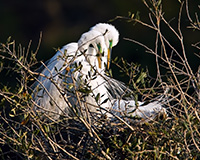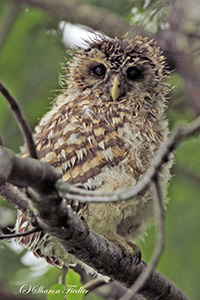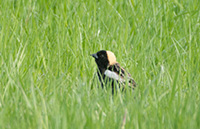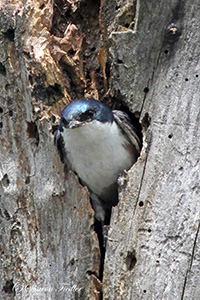Home → Maine Bird Atlas → Resources and Materials → Special Species’ Surveys and Guidance Documents for the Maine Bird Atlas
Special Species’ Surveys and Guidance Documents for the Maine Bird Atlas
Overwhelmed by the thought of atlasing an entire block? Don’t feel like you know enough birds to contribute to this project?
Focus on one species or many.
While Maine is full of many conspicuous bird species singing at the tops of trees, swimming in our lakes, or piling up on islands off shore, many are more secretive, especially during the breeding season. As such, they are often simply harder to detect, whether because of natural habits or rarity in the state. Many are also of conservation concern, and since standard sampling/atlasing activities largely over look these species, we have developed some separate survey protocols and species-specific guidance documents for volunteers.
By volunteering to help with special species surveys or just making special efforts to find some of these more secretive species in your block, you are helping ensure the Maine Bird Atlas ‘leaves no bird behind’ and becomes a model as one of the most comprehensive atlases on the planet.
Secretive Marshbirds

Green Heron

Virginia Rail
Marsh birds are a tough group to study because of their secretive nature. Populations of many marsh birds that are dependent on emergent wetlands appear to be declining in the region, but these species can be difficult to detect without focused efforts. As an atlas volunteer, you will likely spend some time exploring a wide variety of habitats, hopefully including wetlands. Detecting Maine’s secretive marshbirds and other wetland species requires a little extra time and effort, however. With their dense emergent vegetation and often impassable topography, wetlands make for challenging habitat to survey. We hope this Marshbird Guidance Document (PDF), that provides information on the types of wetlands you might encounter and breeding behaviors for species you can expect to find in Maine’s wetlands, will equip you with tools for success.
ADOPT-A-MARSH - In addition to atlasing wetlands in your area for secretive marsh birds, we are also looking for volunteers to Adopt-a-Marsh. We have 200 marshes around the state at which we are conducting standardized audio playback surveys, and we need help! Click here to find out what this entails and to view a map of our available marshes.
Colonial Waterbirds

Great Egret
While not especially difficult to identify or determine breeding activity, colonial waterbirds in Maine can be hard to find. By habit, these species nest in large groups in few locations. They also favor predator-free habitats and are especially sensitive to disturbance. Islands offshore, in lakes, or other wetlands are the places to look for these specialties. Check out our Colonial Waterbirds Guidance Document (PDF) for some more species-specific information on finding them.
Nocturnal and Crepuscular Birds

Barred Owl (juvenile)
While mostbird observations for the atlas will be captured during daylight hours, we are looking for volunteers to venture out at dawn, dusk, and after dark too. Atlasing at these special times will help fill an important information gap in our current atlas efforts. Every evening, as the sun sets and the moon rises, the cast of active birds shifts. Check out our Nocturnal and Crepuscular Birds Guidance Document (PDF) to learn more about this cast of characters.
Willing to take on a little more responsibility or just have a passion for creatures of the night? Email your regional coordinator or our project coordinator to ask about conducting standardized owl playback surveys AND visit mainenightjar.com for more information on helping collect specific data on Whip-poor-whill and Common Nighthawk in Maine, in addition to general atlasing activities.
Grassland Birds

Bobolink
Grassland birds can be found nesting in pastureland, agricultural lands, wet meadows, scrubby utility line corridors, and the increasingly rare native grassland. Some of these grassland bird specialties are rather conspicuous. Many are secretive and more difficult to observe during the breeding season. As many forests and urban areas expand, however, grasslands have become increasingly uncommon, as have their avian occupants (grassland bird populations have declined >53% in the last 40 years). This means extra effort must be made to document birds found in these rare habitats. Check back soon for our Guidance Document on Maine’s grassland bird species.
Cavity Nesting Birds and Nest Box Monitoring

Tree Swallow
From Barred Owls to Black-capped Chickadees, Maine offers breeding grounds for songbird, raptor, and waterfowl cavity-nesting species. Although many cavity-nesting species are currently increasing in number, some species such as the American Kestrel, Tree Swallow, and Purple Martin are experiencing declines in Maine. Man-made nest boxes designed to meet the requirements of a specific species can provide suitable nesting sites when installed in appropriate habitat. They also provide the unique opportunity to gather information on the breeding status of its inhabitants while also providing nesting opportunities where sites might be limited. Click here to learn how you can volunteer to monitor your very own nest box - Nest boxes also available free of charge while supplies last.